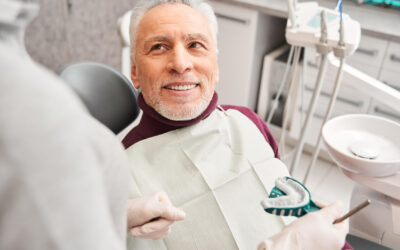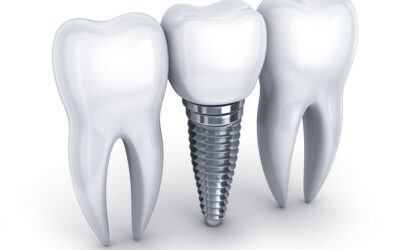Sedation Dentistry and Oral Surgery: Everything You Need to Know
Almost 24% of people around the world have a fear of the dentist. Are you a little worried about your upcoming oral surgery? Most first-time patients are, especially when the procedure involves sedation.
The biggest concern is whether or not sedation at the dentist is safe. Specifically, are there any possible dangers you should worry about? The good news is, that there’s virtually no risk involved with sedation dentistry.
Still, patients also wonder, “How long does oral surgery take?” And, for that matter, how long does the sedation last?
The answers largely depend on the type of sedation and the particular oral surgery procedure involved. Fortunately, we explain everything you need to know in this guide.
What follows is a complete overview of oral surgery with sedation. Read on to put your mind at ease.
What Is Dental Sedation?
Dental sedation means that the dentist or oral surgeon administers drugs to put the patient into a deeply relaxed state. There are different levels of sedation used for oral surgery.
Minimal sedation means that the patient is fully awake but very relaxed. Moderate sedation has added effects, such as slurred speech and no memory of the procedure.
Deep sedation means that the patient is almost asleep but still conscious and aware. General anesthesia renders the patient fully unconscious.
Which Patients Need Sedation Dentistry?
Not all patients require sedation for oral surgery. But it’s usually recommended for patients who have:
- Fear, anxiety, or phobia about dental procedures
- Fear, anxiety, or phobia about needles
- A claustrophobic fear of being confined to the chair for the procedure
- A hypersensitive gag reflex
- Very sensitive teeth
- An above-average immunity to local anesthesia
- Symptoms of certain medical conditions/special needs that may interfere with the procedure
Put simply, sedation is used to keep the patient calm and compliant so that the oral surgeon can perform the surgery.
Types of Sedation Used in Dentistry
Here, we list the different types of sedation used for oral surgery. This list describes how each sedative is administered and how long it lasts. It’s also helpful to ask your surgeon (before surgery) which sedative they’ll use for your particular procedure.
Nitrous Oxide
Nitrous oxide, also known as laughing gas, is combined with oxygen and inhaled through the lungs. Thus, it’s a great option for patients who don’t like needles or pills.
Nitrous oxide tends to have a happy and euphoric effect on patients. The sedated patient is still aware of the procedure. But they won’t feel it and they may not remember it.
These effects happen within minutes however, they fade quickly once the gas is stopped. Therefore, nitrous oxide is administered continuously throughout the duration of the procedure.
Oral Sedatives
The dentist may offer oral medication to sedate the patient. It takes about 20 minutes for these sedatives to take effect. And the effects can last for over an hour.
Patients sedated this way may be drowsy. But they’re usually kept awake during surgery. Additionally, these patients are asked not to consume any food or drinks before the surgery.
Intravenous Sedatives
Intravenous sedatives are only ideal for very long procedures. The effects are instant and administered continuously. This allows the surgeon to control the exact level of sedation at all times.
General Anesthesia
General anesthesia is the last resort for patients who will not or cannot remain calm and still any other way. Anesthetized patients will be unconscious and completely unaware of the procedure.
While complications are rare, this method poses a slight risk of danger to the patient. Conversely, the other methods do not.
Preparing the Patient/Yourself For Oral Surgery
For specific instructions, ask your surgeon how you or your loved one should prepare for oral surgery with sedation. Here, however, we describe some general instructions.
Emotional Preparation/Support
If the surgery is for your child, you’ll know best how to comfort him/her. For example, ask the surgeon if your child can hold their favorite toy/stuffed animal during the surgery.
Also, some children feel better knowing the details of the procedure. Use discretion and explain the procedure to the child, if it helps. During the procedure, speak to and touch the child (when allowed), keeping his/her focus on you.
On the other hand, if you are the patient, recruit a loved one to comfort you in these ways.
General Instructions/Safeguards
For nitrous oxide sedation, patients may consume a light meal beforehand. Other types of sedation have more strict requirements. Specifically, no food or drinks are allowed after midnight on the day of the procedure.
Typically, however, clear drinks like water or apple juice are allowed before the surgery. This includes any translucent beverage with no solids in it (namely, pulp).
As such, milk, coffee, and orange juice are not allowed. Artificial/sugary drinks like soda aren’t okay, either. Regardless of these general guidelines, though, please get specific instructions from your surgeon.
Instructions For Infants Younger Than 12 Months
Babies younger than 12 months may sometimes require oral surgery. These patients should be fed within 4-6 hours before surgery. Formula-fed infants should finish their feeding 6 hours prior.
Aftercare
Immediate care after surgery depends on the level of sedation. For instance, there are no residual effects of nitrous oxide sedation whatsoever. The patient simply feels as though he/she is waking from a dream.
This is also true of IV sedation. Although, oral/IV sedation may have mild side effects, such as nausea.
In contrast, oral sedatives have to run their course. The amount of time before they wear off depends on the type/amount given. In any case, the patient should not drive until the effects are completely gone.
Once these sedatives wear off, some patients experience post-surgery pain. Thus, the surgeon might prescribe pain medication and provide some before the patient leaves.
Patients should not drive under the influence of certain pain medications, either. Vicodin, for example, can cause drowsiness and other side effects that impair driving ability.
Find Out More About Oral Surgery With Sedation
We hope this guide has eased your concerns about sedation at the dentist. If you still have more questions, we’re here for you.
Call our office at (310) 315-1034 to find out more about your oral surgery sedation options. Or, book your exam right now so you can speak with us directly.



